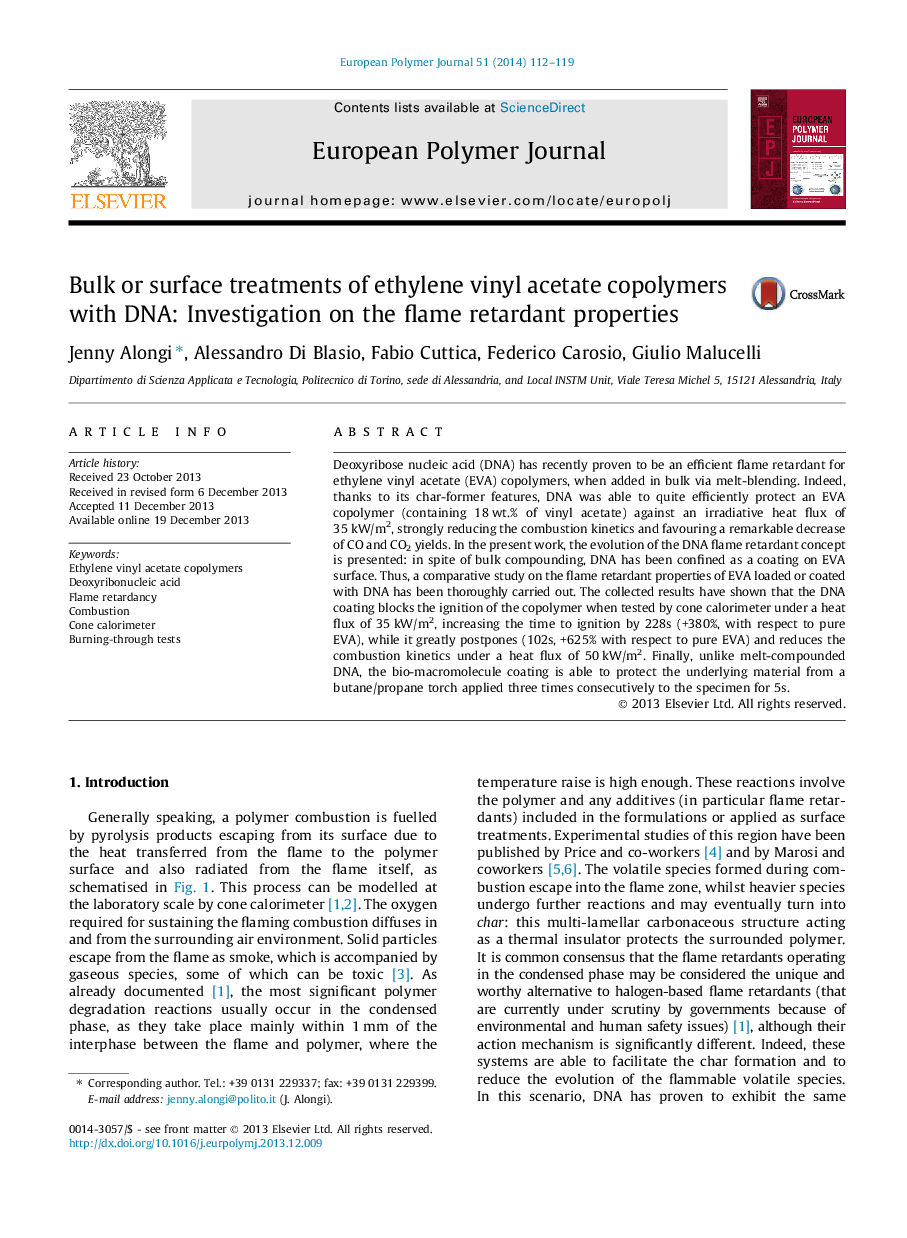| Article ID | Journal | Published Year | Pages | File Type |
|---|---|---|---|---|
| 1401818 | European Polymer Journal | 2014 | 8 Pages |
•DNA was coated on ethylene-vinyl-acetate plates.•The DNA coating blocked the ignition of the copolymer under a heat flux of 35 kW/m2.•DNA postponed and reduced the combustion kinetics under a heat flux of 50 kW/m2.
Deoxyribose nucleic acid (DNA) has recently proven to be an efficient flame retardant for ethylene vinyl acetate (EVA) copolymers, when added in bulk via melt-blending. Indeed, thanks to its char-former features, DNA was able to quite efficiently protect an EVA copolymer (containing 18 wt.% of vinyl acetate) against an irradiative heat flux of 35 kW/m2, strongly reducing the combustion kinetics and favouring a remarkable decrease of CO and CO2 yields. In the present work, the evolution of the DNA flame retardant concept is presented: in spite of bulk compounding, DNA has been confined as a coating on EVA surface. Thus, a comparative study on the flame retardant properties of EVA loaded or coated with DNA has been thoroughly carried out. The collected results have shown that the DNA coating blocks the ignition of the copolymer when tested by cone calorimeter under a heat flux of 35 kW/m2, increasing the time to ignition by 228s (+380%, with respect to pure EVA), while it greatly postpones (102s, +625% with respect to pure EVA) and reduces the combustion kinetics under a heat flux of 50 kW/m2. Finally, unlike melt-compounded DNA, the bio-macromolecule coating is able to protect the underlying material from a butane/propane torch applied three times consecutively to the specimen for 5s.
Graphical abstractFigure optionsDownload full-size imageDownload as PowerPoint slide
